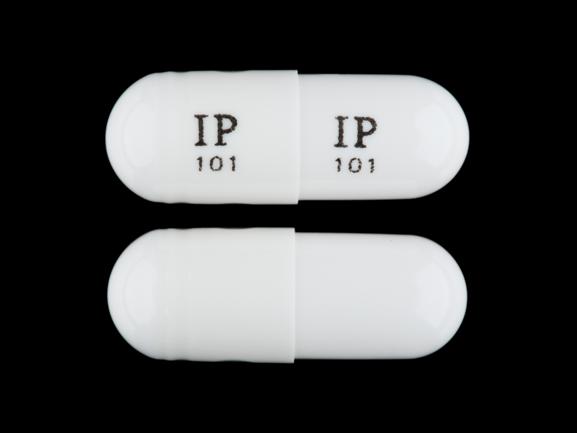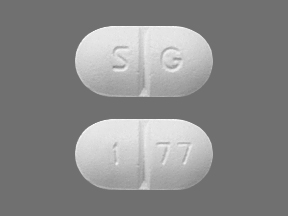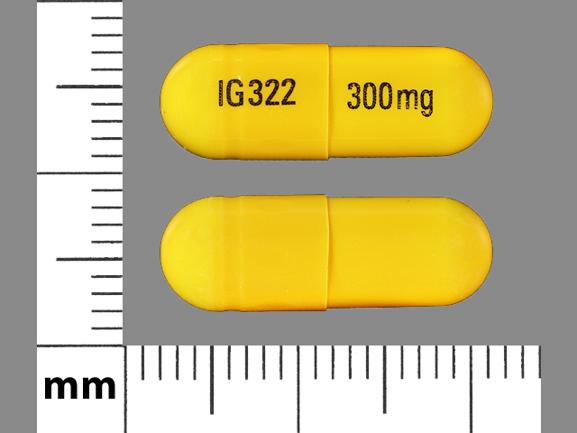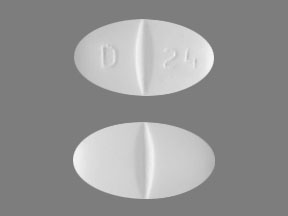Pill with imprint IP 101 IP 101 is White, Capsule/Oblong and has been identified as Gabapentin 100 mg. It is supplied by Amneal Pharmaceuticals.
Gabapentin is used in the treatment of Back Pain; Postherpetic Neuralgia; Epilepsy; Chronic Pain; Seizures and belongs to the drug class gamma-aminobutyric acid analogs. Risk cannot be ruled out during pregnancy. Gabapentin 100 mg is not a controlled substance under the Controlled Substances Act (CSA).

The efficacy of Gabapentin in the treatment of neuropathic pain has been demonstrated in several placebo-controlled studies. In a study involving 502 patients with neuropathic pain treated with Gabapentin at a dose of 300 to 1800 mg/day, efficacy was assessed by the percentage of patients who had a 50% or more reduction in pain.
Gabapentin has been shown to be effective in 69% of patients receiving 900 or 1800 mg per day, and in 57% of patients taking 300-600 mg of Gabapentin. In approximately 80% of patients responding to therapy, the effect persisted after discontinuation of the drug.
Gabapentin
- Imprint
- IP 101 IP 101
- Strength
- 100 mg
- Color
- White
- Size
- 16.00 mm
- Shape
- Capsule/Oblong
- Availability
- Prescription only
- Drug Class
- Gamma-aminobutyric acid analogs
- Pregnancy Category
- C – Risk cannot be ruled out
- CSA Schedule
- Not a controlled drug
- Labeler / Supplier
- Amneal Pharmaceuticals
Labelers / Repackagers
| NDC Code | Labeler / Repackager |
|---|---|
| 53746-0101 (Discontinued) | Amneal Pharmaceuticals LLC |
| 65162-0101 | Amneal Pharmaceuticals LLC |
| 42291-0300 (Discontinued) | AvKare, Inc. |
| 63739-0675 (Discontinued) | McKesson Packaging Services |
| 63739-0591 | McKesson Packaging Services |
Gabapentin is a medication that is primarily used to treat epilepsy and neuropathic pain.
Gabapentin is used to help control partial seizures (convulsions) in the treatment of epilepsy. This medicine cannot cure epilepsy and will only work to control seizures for as long as you continue to take it.
Gabapentin is also used to manage a condition called postherpetic neuralgia, which is pain that occurs after shingles.
Gabapentin works in the brain to prevent seizures and relieve pain for certain conditions in the nervous system. It is not used for routine pain caused by minor injuries or arthritis. Gabapentin is an anticonvulsant.
This medicine is available only with your doctor’s prescription.
This product is available in the following dosage forms:
- Capsule
- Tablet
- Tablet, Extended Release, 24 HR
- Solution
- Suspension
Its exact mechanism of action is not fully understood, but it is known to interact with certain components of the nervous system. Here is a detailed explanation of the proposed mechanisms by which gabapentin exerts its therapeutic effects:
Mechanism of Action
- Binding to the α2δ Subunit of Voltage-Gated Calcium Channels:
- Gabapentin binds with high affinity to the α2δ subunit of voltage-gated calcium channels in the central nervous system.
- This binding inhibits the influx of calcium ions into neurons, which in turn reduces the release of excitatory neurotransmitters such as glutamate, norepinephrine, and substance P.
- By decreasing the release of these neurotransmitters, gabapentin helps to stabilize neuronal activity and reduce the hyperexcitability that contributes to seizures and neuropathic pain.
- Reduction of Excitatory Neurotransmission:
- The inhibition of calcium influx and subsequent reduction in neurotransmitter release results in decreased excitatory synaptic transmission.
- This reduction in excitatory signaling is believed to contribute to the anticonvulsant and analgesic effects of gabapentin.
- Modulation of GABAergic Neurotransmission:
- Although gabapentin is structurally similar to the neurotransmitter gamma-aminobutyric acid (GABA), it does not directly bind to GABA receptors or influence GABA synthesis or uptake.
- However, gabapentin may enhance the synthesis of GABA and increase its release in certain brain regions, which could contribute to its overall calming effect on neuronal activity.
- Inhibition of Central Sensitization:
- In conditions like neuropathic pain, there is often a phenomenon known as central sensitization, where the nervous system becomes sensitized to pain stimuli.
- By inhibiting calcium influx and reducing excitatory neurotransmitter release, gabapentin helps to diminish central sensitization and alleviate chronic pain symptoms.
Therapeutic Effects
- Anticonvulsant:
- Gabapentin’s ability to decrease neuronal excitability and stabilize electrical activity in the brain makes it effective in controlling seizures, particularly partial seizures.
- Analgesic:
- The reduction in neurotransmitter release and inhibition of central sensitization make gabapentin effective in treating various forms of neuropathic pain, such as diabetic neuropathy and postherpetic neuralgia.
- Other Uses:
- Gabapentin is also used off-label for other conditions like restless legs syndrome (RLS) and certain anxiety disorders, where its modulatory effects on the nervous system can provide symptomatic relief.
Amneal Pharmaceuticals
Amneal Pharmaceuticals is a U.S.-based pharmaceutical company known for developing, manufacturing, and distributing generic and specialty pharmaceutical products. Here is an overview of the company:
Company Overview
- Founding and History:
- Founded: In 2002 by brothers Chirag and Chintu Patel.
- Headquarters: Bridgewater, New Jersey, USA.
- Growth: The company has grown significantly since its inception, becoming one of the largest generic drug manufacturers in the United States.
- Operations and Facilities:
- Manufacturing: Amneal operates multiple manufacturing facilities in the United States, including sites in New York, New Jersey, and Kentucky, as well as internationally.
- Research and Development: The company invests heavily in R&D to develop new generic and specialty pharmaceutical products.
- Product Portfolio:
- Generics: Amneal’s portfolio includes a wide range of generic medications covering various therapeutic areas, such as oncology, central nervous system, cardiovascular, anti-infective, and anti-inflammatory drugs.
- Specialty Pharmaceuticals: The company also focuses on branded pharmaceuticals, particularly in areas like neurology, endocrinology, and infectious diseases.
- Biosimilars: Amneal is involved in developing biosimilars, which are biologic products highly similar to FDA-approved reference products.
- Acquisitions and Partnerships:
- Amneal has grown through strategic acquisitions and partnerships. Notable acquisitions include Impax Laboratories, which helped expand its specialty pharmaceutical and generic drug offerings.
- The company also collaborates with other pharmaceutical companies and research institutions to enhance its product pipeline and market presence.
- Regulatory Compliance:
- Amneal adheres to stringent regulatory standards set by the U.S. Food and Drug Administration (FDA) and other global regulatory bodies to ensure the quality, safety, and efficacy of its products.
- The company undergoes regular inspections and audits to maintain compliance with Good Manufacturing Practices (GMP).
- Market Presence:
- Amneal products are distributed globally, and the company has a significant market presence in the United States, Europe, and other international markets.
- The company supplies pharmaceuticals to wholesalers, distributors, retail chains, and healthcare providers.
- Corporate Responsibility:
- Amneal is committed to corporate social responsibility, focusing on sustainable practices, ethical business conduct, and community engagement.
- The company also engages in philanthropic efforts, including donations and support for healthcare initiatives and education.
Conclusion
Amneal Pharmaceuticals is a prominent player in the pharmaceutical industry, known for its extensive range of generic and specialty pharmaceuticals. With a strong focus on research and development, regulatory compliance, and strategic growth, Amneal continues to expand its presence in the global pharmaceutical market. The company’s commitment to quality and innovation positions it as a key provider of affordable and accessible healthcare solutions.






